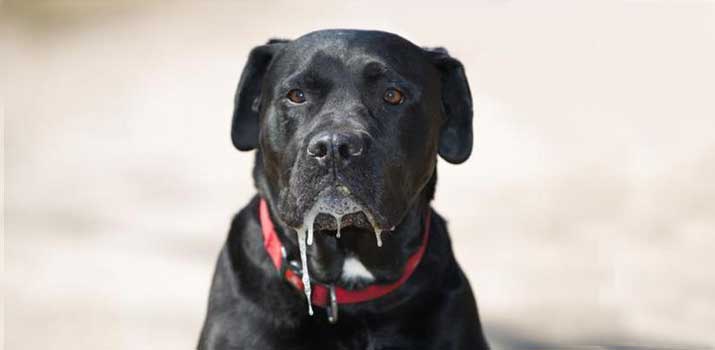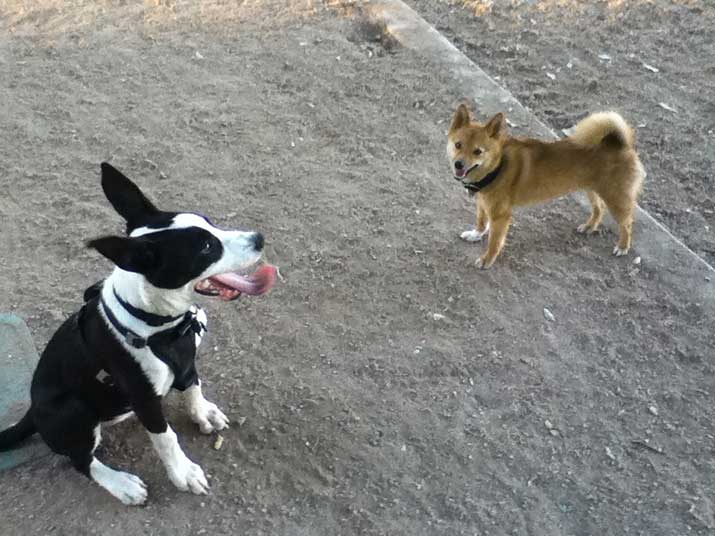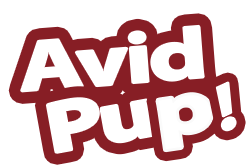
Dogs and drool go hand-in-hand! Canines have several saliva-producing glands in their mouths. That gross stuff helps with digestion, swallowing, staying cool, and other essential functions.
It even has enzymes to help keep bacteria at bay.
For the most part, drool is relatively manageable.
Sure, some breeds like Newfoundlands and Saint Bernards look like they have a never-ending supply constantly dripping from their mouths. But for most dogs, excess saliva rarely makes an appearance outside mealtime or during bouts of hot weather.
A little drool never hurt anyone. But what if it seems to come out of nowhere?
Excessive salivation isn’t normal, and the situation that causes it could raise a few red flags. One alarming scenario is drooling around a new puppy.
Bringing a new puppy into your home can be an exciting time. You’re expanding your pack and providing a potential new playmate for your existing dog!
But why is your adult dog suddenly drooling so much around the new puppy?
Why Your Dog is Drooling Around the New Puppy
There are a few possible explanations for this weird reaction.
The drooling could indicate digestive problems, dental disease, or high temperatures in any other context. But if it occurs when introducing your new puppy, there’s a clear connection.
Dogs usually don’t drool excessively unless there’s a reason to. So, what gives?
We hate to be the bearer of bad news, but that drool could be a sign of stress. Mild stress, anxiety, and general nervousness increase saliva production. It’s a natural response that dogs have zero control over.
We get it: There’s more exciting than bringing that young pup home.
You have all this pent-up excitement and are eager to introduce this new family addition to your lovable, furry friend.
The very thought of your adult dog not reacting well to the puppy probably didn’t even cross your mind! But it’s a genuine possibility that many dog owners unexpectedly face.
This event is a big deal for your dog!
Up until this point, they’ve had a pretty stable routine. They knew what to expect, what to do, and how their day would be.
Suddenly, you plopped this new thing into their lives. It’s a pretty big curveball that can be overwhelming to handle.
Adult dogs thrive with structure, and this brand-new stimulant creates more excitement than they are used to feeling.
Pay attention to your dog’s body language. There’s a good chance they’ll have other symptoms of stress. For example, you might see panting, facial expressions, scratching, excessive yawning, pacing, etc.
That drooling is just one of the many signs of stress.
The good news is that this mild anxiety is pretty standard when older dogs meet puppies. In most cases, it’s a transitory thing that will get better as your dog gets familiar with this new presence.
Should You Be Concerned?
Any unexpected reaction like drooling should be a cause for concern. But, you do not need to panic. As mentioned earlier, mild stress is normal.
The critical thing to remember is that dogs are capable of complex emotions. They can react differently than you expect, and it doesn’t take much to take a dog over the edge.
When introducing your new puppy, pay close attention to your other dog’s body language.
There’s the potential for aggression. Even the most well-behaved dog can lash out when feeling anxious.
Watch your adult dog like a hawk!
They will likely adopt a defensive stance and do an intense stare-down. The hairs on their back might even stand up. But if your dog starts to growl or show their teeth, you must separate the dogs for your puppy’s safety.
Canines tend to give off multiple warnings that they’re about to attack, so look out for those signs.
Not every dog will react with such aggression. Some are more than happy to welcome a new pup into the mix. It all depends on what the dog is feeling and its general temperament.
No matter how well you know your dog, keep an eye on them when introducing a new puppy.
How to Successfully Introduce a New Puppy to Your Adult Dog
Whether you’ve attempted a meetup before or this is your first time letting your old dog and new puppy interact, there are ways to ensure that things go smoothly.
Your dog and puppy have unique personalities. The key is to ease the transition and allow the two to get to know each other without stress getting in the way.
Here are a few tips to help you do just that.
Choose a Neutral Meeting Space
This tip is one of the most important.
The biggest mistake dog owners make is automatically bringing a new puppy home and expecting things to go swimmingly.
Put yourself in your adult dog’s shoes for a second. You’re bringing a new creature into their domain!
If your dog regularly barks at the mailman or anyone who tries to encroach on your property, you’re making a huge mistake!
Your dog feels ownership over your house, so bringing a new pup there for the first meeting can leave your adult dog feeling angry from the jump.
Choose a neutral place like a park. Keep both dogs leashed and try to do the meeting in a contained space.

Go Slow
Be patient and let your dogs get to know each other at their own pace. Don’t force anything. Instead, stand watch and let the dogs do their thing!
Dogs have their oddball rituals. You might see some butt-sniffing and general pacing around.
Related: Why Your Dog Licks Other Dogs Urine
Those behaviors are all normal. Let them go through the motions and pick up each other’s scents. It could take a little while for the two to get comfortable.
For example, they might not want to walk directly next to each other. That’s OK! Give them time.
You’ll know the two are ready when they start playing with other or getting close without any force.
Keep a Watchful Eye
Even if things go well, observe your dogs.
You already know what to look out for during the first meeting. However, it would be best to look for those same things in the coming days and weeks.
Dogs can get along fine at first. But things are different when you get home. Your puppy has to get comfortable with its new environment, and your adult dog has to get used to the new presence and the concept of sharing.
There are tons of adjustments to go around, so there are plenty of ways issues can pop up.
Monitor how they behave and interact at home. You might have to separate the two and do some exercises to foster camaraderie.
Remember that stress levels are high on both sides, so be patient and take action if necessary.
Conclusion
It’s normal for dogs to drool around new puppies during their first meeting. That saliva is a sign of mild stress. While alarming, it’s pretty standard given the situation.
Be patient and take steps to ensure that the meeting goes smoothly. It might be rocky at first. But with a bit of encouragement, your dogs will be best buds in no time!
Also Read: 6 Reasons Why Dogs Pant In The Car

